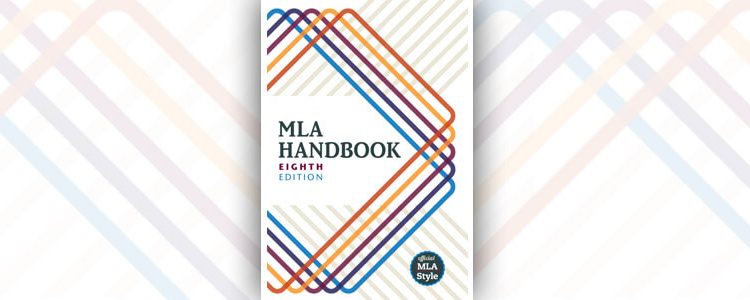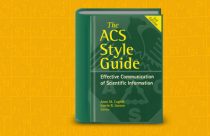Decoding Revisions to the 8th Edition of the MLA Style Guide

There are many protocols in academic writing because of style guides that are focused towards a specific discipline. For example, the Chicago Manual of Style, created by the University of Chicago, applies to all disciplines and presents complete instructions and guidelines for capitalization, punctuation, citations and references, and much more—basically, it covers the syntax of the English language—and is considered the “bible” of style guides for the general writer. Writers of both prose and poetry use this guide; however, researchers who write for specific audiences or disciplines, such as the biological or behavioral sciences, have different guidelines. For example, scholars in the behavioral sciences use the American Psychological Association (APA) style guide when writing their theses or papers for publication; those in the biological sciences (including medicine) use Scientific Style and Format published by The Council of Science Editors; and those in the humanities use the Modern Language Association (MLA) style guide. In most, but not all cases, the differences among styles are the formats for citations and references; however, there might also be inconsistencies in how to write numerals (e.g., “2” or “two”), whether to use serial commas or other minor differences.
In this article, we focus on the MLA Handbook Eighth Edition and the major changes that were made in 2016 to address questions concerning electronic media. Many style guides are now updating their citation and reference protocols to accommodate online citations so that there is more consistency across styles.
MLA Style Guide
Founded in 1883, MLA boasts of one of the best publishing programs in the humanities, and its members continue to work to “strengthen the study and teaching of language and literature.” MLA supports the advancement of “literature, language, writing studies, screen arts, digital humanities, pedagogy, and library studies.” In MLA’s eighth edition of the handbook, the organization presents new citation and reference guidelines for writers, regardless of their sources or fields of study. According to MLA, many sources cannot be defined and because of online access, sources are available from more than one forum; therefore, the new edition suggests some “core elements” that writers can consult to create citations and references without checking the handbook for each entry that is out of the ordinary. The following core elements are the “basic pieces of information that should be common to all sources” for adhering to the correct MLA style
- Author number
- Title of source
- Publisher
- Title of container
- Publication date
- Other contributors
- Location
- Version
MLA has made it easy to create a reference using these pieces of information, in that order, and suggests that if the information is complete, the reference is correct (an example of a reference in the MLA style is given below).
Brooks, Gwendolyn. “We Real Cool.” The Norton Introduction to Literature, edited by Jerome Beaty and J. Paul Hunter, shorter 7th ed., W.W. Norton & Company, 1998, p. 654.
Specific Changes
The following is a list of the changes made in MLA’s new edition with page numbers for reference. The MLA website can be accessed for more complete information. Whether you are a researcher, educator (or both), or student in the humanities field, the new handbook should be very helpful when creating citations and references for MLA style of academic writing; however, be sure to check the new entries against the older edition so that you are familiar with the changes. The MLA Style Center also offers helpful tutorials.
General
- Abbreviations: Previously abbreviated words (e.g., editor, edited) are defined and the roles of contributors follow the title (e.g., “edited by”) (see pages 96–97 for a list of abbreviations still used).
- Authors: The first author (previously, the first three) is followed by et al (22).
- Common references: Complete information provided.
- Medium: Not stated, except for clarity (52).
Books and Other Printed Works
- Page numbers: Preceded by “p” or “pp” in references. Number ranges provided for articles in alphabetically arranged books (46).
- City of publication: No longer listed for books and other publications (51).
Journals, Magazines, Newspapers
- Volume and issue: Abbreviated as “vol.” and “no.” (e.g., vol. 5, no. 6) (39–40).
- Month or season: If the month/season is listed, it is cited (45).
- Titles beginning with an article: Articles treated as part of the title, italicized, and initial capped (e.g., “The Georgia Review”).
Online Works
- URL is used: No http:// or https://; angle brackets not used (48, 110).
- Digital object identifiers (DOIs): Use is encouraged (110).
- Access date: No longer must cite (53).
- Placeholders: No longer used (e.g., d.); external resources for missing facts cited in square brackets.
Publishers
- Names: Full names, except for “Co.” and academic presses (97).
- Copublishers: Forward slash (/) separates names (108).
- No publisher name: Publications that don’t require a publisher’s name are defined (42).
- Author also publisher: Publisher name given; no author stated (25).
In general, the format for in-text citations in the new edition has not been revised; however, there are a few details that have been added.
- Time-based media: Times are cited in the text (57).
- Translations: Use of “my trans.” for translated non-English quotations (90–91).
- Long titles: How to shorten for parenthetical citations (117–118).
- Greek, Roman, and medieval works: Documenting with part and page numbers (122).
- Parenthetical citation: Punctuation for combining various included items (126–127).
- Research papers: Various citation/reference formatting provided (127–128).
Although there are a few other changes in the new MLA Handbook; however, some are worth noting.
Scripts and Quotations
- Latin alphabet: Writers must choose the script for titles and quotations (74, 91).
- Verse: Two forward slashes (//) for stanza breaks in run-in quotations (78).
- Block quotations: No first-line indention for internal paragraphing (77).
Always ensure to check the author guidelines of the journal to which you will submit your research paper as the journal guidelines will always supersede the style guide in most cases.









